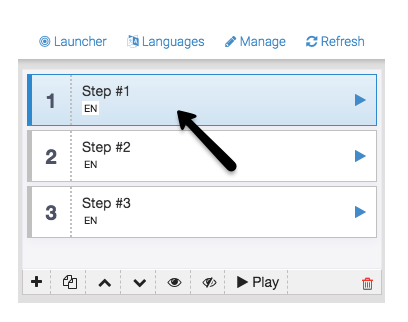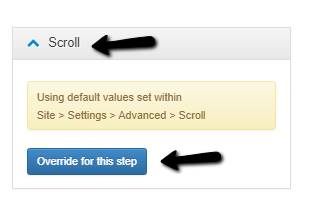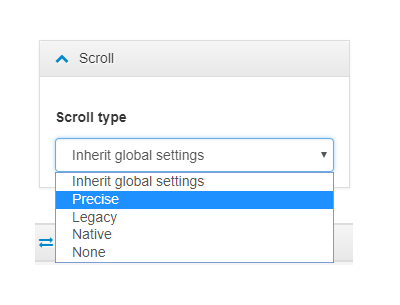With the Advanced panel in the Authoring Tool, you can further customize your walkthroughs' tooltips and steps.

With the Advanced panel, you can set up:
- Custom Class
- Path filter (walkthroughs)
- Max continuation attempts (walkthroughs)
- Frames
- Scroll type
In this article, we'll describe the above functionalities of the Advanced panel.
Opening the Advanced panel
The Advanced panel appears in the Authoring Tool when you create and edit steps of your walkthroughs and tooltips. This article will start at this point and won't explain how to build a walkthrough. To learn how to create it, please check this article first.
To open the Advanced panel:
In the Authoring tool, while you're editing or adding a walkthrough or a tooltip, select a step from a list of steps or click _ "+"_ to create a new one.

Scroll down to the Advanced panel and expand the tab. Now, you see the Advanced panel.

Functionalities of the Advanced panel
With the Advanced panel, you can set up:
- Custom Class - you can add a custom CSS class to a step or tip.
- Path filter (walkthroughs) - it sets the specific path for the step to appear on, it won't appear on any other path than the one specified.
- Max continuation attempts (walkthroughs) - it tells the player how many times it should try to redirect the user to the path if set.
- Frames - if your application uses frames (iFrames), we can enable this feature for you (it is part of Enterprise features). Contact Support for more info. It tells the player which iFrame this step should appear in to avoid duplicates.
In the Advanced, panel, you can also set up a scroll type which helps in various situations, where the application might not work correctly with default scroll behaviour. E.g. you can set padding (an area to avoid) if you have a fixed top navigation bar, to avoid step and element being displayed behind it.
Expand the Scroll tab and click Override for this step.

From a drop-down menu, you can choose:
- Inherit global settings - settings from the Inline Manual portal will be used.
- Precise - it uses a custom method. It allows you to adjust options such as scroll position and scroll padding.
- Legacy - it checks if an element is inside a viewport. Then it uses the native element.scrollIntoViewport() method. It is the default behaviour of scrolling.
- Native - it uses native Element.scrollIntoViewport() method without any additional checks. It will use browser's scrolling ignoring the scroll padding if set. You should use it when the target element is nested in multiple scrollable parents. This option does not allow any customization (e.g. animations) and may behave differently between browsers.
- None - it won't do any scrolling. It is designed to be used in rare cases when scrolling the element into viewport would break the page layout (e.g., global overflows).

We describe in detail the specific scrolling option here.



